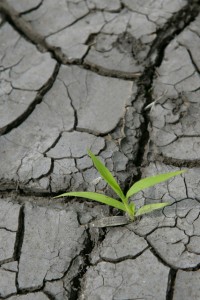
On this page, you will find suggestions in these five areas:
- Understand the fundamentals
- Think about climate change impacts
- Be (somewhat) familiar with climate policy
- Know how to deal with deniers
- The changes we need to make are positive
Click a link in the list above to jump to that topic on this page.
Get familiar with the facts about climate change. You can be confident in your ability to work on climate change if you educate yourself. And above all, remember there is hope for the future.
Understand the fundamentals
As you dig into the subject of climate change it can get confusing. Keep in mind these basic points that are well understood:
There is overwhelming evidence and agreement throughout the scientific community that since the mid-1800s (i.e. after the beginning of the industrial revolution) and especially in the past 50 years, the planet’s climate has been changing more rapidly than normal.
The most compelling pieces of evidence are these:
- Instrument records of global average temperatures clearly show an increase of about three-quarters of a degree Celsius in the last 100 years. (1) (There has not been a corresponding change in solar irradiance in this period.) (2)
- Average minimum area of summer Arctic sea ice has declined by about 30% over the last 30 years. (3)
- Alpine glaciers are receding in almost every part of the world. (4)
- Many of the world’s permafrost areas are thawing. (5)
Greenhouse gases (GHG) warm the earth because they absorb infrared energy (light). The greenhouse effect has been well understood since the late 19th century. Without the greenhouse effect, the average temperature of the earth would likely be about -18oC instead of the current +15oC. (6)
The amount of greenhouse gases (GHG) in the atmosphere has been steadily increasing since the mid-1700s. (7) There is no credible way to account for these increases other than through human activities. The cause of increasing levels of one of the important GHGs — carbon dioxide — is the burning of fossil fuels.
According to ice core records, the level of atmospheric carbon dioxide reached 400 parts per million in 2014. (400 ppm) This level is higher than at any time in the past million years.
For more information on the science of climate change, do one of the following:
- Visit the Science area of this website
- View or download our brochure “Puzzled About Climate Change?”
- Order printed copies of “Puzzled About Climate Change?” by calling us 204-943-4836 or e-mail us
Think about climate change impacts
Many of the consequences of climate change are very likely to be severely negative, far-reaching, and increase with time. If we care about our children and future generations, we need to take serious action now.
In the world
These are the key global issues:
- Many of the negative consequences of climate change globally relate to water. Parts of the world may see increased flooding and drought. These impact water quality and availability.
- Those water issues can result in food scarcity.
- There may also be increases in disease and pest infestations.
- Climate change may eventually contribute to increased military conflicts over scarce resources.
- Rising costs to deal with all of the issues above will put an increasing burden on governments and individuals increasing deficit and debt.
In your community
Changes in climate will affect more than just communities dependent on agriculture, forestry, and fishing. Here are some of the ways a changing climate may affect virtually all communities:
- Transportation — Costs of fossil fuels are expected to increase. This may be a result of something like a carbon tax, but fuel costs will almost certainly rise over time as cheaply available sources run out. This will necessitate some adaptation:
- Local self-sufficiency may increase (e.g. more local food, supplies, and services). This may encourage local businesses to build connections and co-operate to meet local community needs as opposed to competing with each other.
- Commuter communities may need to adapt (e.g. connecting to work remotely via the internet, finding local employment in a growing local food, supply, and service business)
- Infrastructure — Local infrastructure may be stressed or may need to adapt in a number of ways. Here are some possibilities:
- Water supply — Increased frequency of droughts (especially late-season) may require that we encourage conservation and retain more early-season moisture in reservoirs.
- Sewerage systems — Due to the anticipated increase in frequency of severe rainfall events, storm drainage capacity may be challenged and may need to be upgraded.
- Buildings — Municipal, residential, and private buildings may require more insulation and weather-proofing (to reduce energy costs) and may benefit from conversion to new heat sources such as geo-thermal district heating.
“While there is a cost to implementing climate protection activities, there is also a cost of inaction.” – In their report The Business Case for Cutting Greenhouse Gas Emissions from Municipal Operations, the Federation of Canadian Municipalities (FCM) dispels the myth that being environmentally and socially responsible is more expensive than doing nothing.
Be (somewhat) familiar with climate policy
Policies and targets being made at the government level will affect you as an individual, and may affect some of the projects you may be doing in your community.
Below is a listing of where to get information on policies and commitments at each level of government.
| Resource / Link | What it covers |
|---|---|
| City of Winnipeg: Climate Change | The City of Winnipeg's corporate and community plans to reduce GHG emissions |
| Government of Canada: Climate Change | The Canadian government’s climate change action plan. |
| International: International Institute for Sustainable Development (IISD) — Climate Change | Detailed analysis and progressive policy solutions for individuals, companies, and governments in North America and the rest of the world. |
| International: United Nations Framework Convention on Climate Change (UNFCCC) | The Kyoto Protocol agreement expired in 2012. The UNFCCC is hosting the world’s efforts to develop the agreement that will succeed Kyoto |
Deal with deniers
There are many reasons why some people say they do not believe there is a climate crisis or refuse to accept that humans are the cause:
- Some people just do not want to hear bad news
- Some are misinformed
- Some do not want to be told they may need to make changes in their lifestyle
- Some have a stake in one or more of the industries that believe they will benefit from “business as usual”.
An excellent source of information to help you deal with deniers (and help answer some of your own questions) is the Skeptical Science website.
Tip! Taking action to reduce greenhouse gases often results in cost savings related to energy conservation. By calculating the cost savings related to climate change projects you may be able to convince people who aren’t persuaded by the environmental issues.
The danger of denial is that it prevents or delays us from making the important changes we need to make to address climate change.
The clock is ticking; we have a limited time before a warming planet will trigger positive feedback loops that will bring about even greater levels of warming that will be exceptionally difficult to control, let alone reverse.
There no option for “business as usual” in the future. The days of abundant fossil fuel that is cheap to find and bring to market are coming to an end. Any way you look at it, in order to have sufficient energy in the future, we need to reduce our demand and we need to find new sources of energy.
We can either spend more and more on the old fossil fuels or start to invest in new energy sources that are sustainable.
Click here for more resources to help you deal with deniers.
Changes we need to make are positive
 Many of the changes required to combat climate change are just good ideas anyway.
Many of the changes required to combat climate change are just good ideas anyway.
If we are successful and if we make the personal, community, and international changes required to combat climate change, we can make our world a safer, healthier place for future generations.
These positive changes include:
- Increasing energy efficiency
- Reducing waste
- Supporting local business
- Developing local capacity to provide for ourselves
- Growing more of our own food
- Growing more food organically
- Preserving and increasing natural habitats and green space
- Getting connected and working together rather than importing solutions
- Moving away from material consumption as the way to feel satisfied with our lives
Municipal governments and communities can reduce emissions through:
- Land-use, energy and transportation planning
- Infrastructure design
- Green procurement
- Building retrofits
- Water conservation
- Solid waste diversion
- Renewable energy
Source: PCP 2009
Now don’t those sound like good ideas? Isn’t that the kind of world you want for your children anyway?




